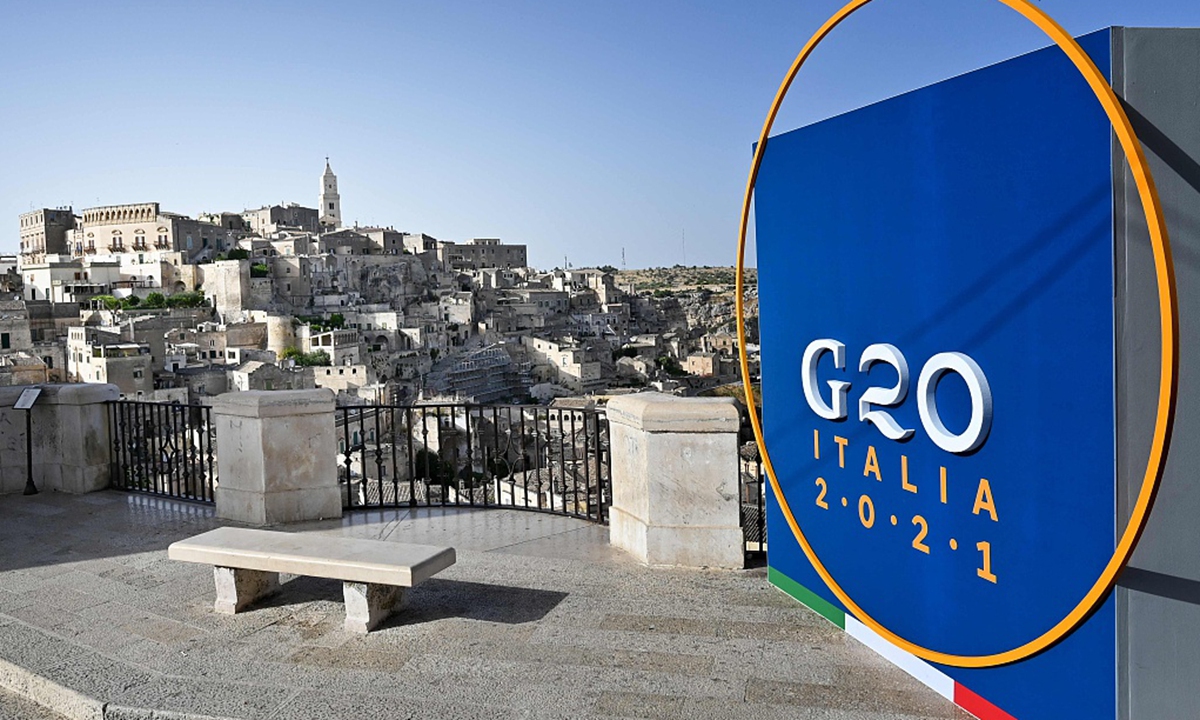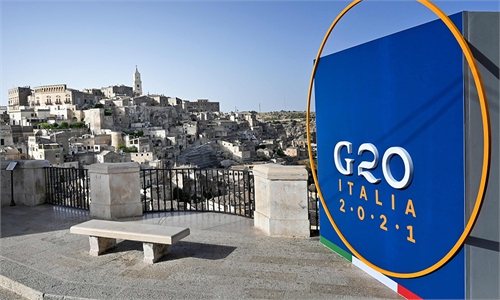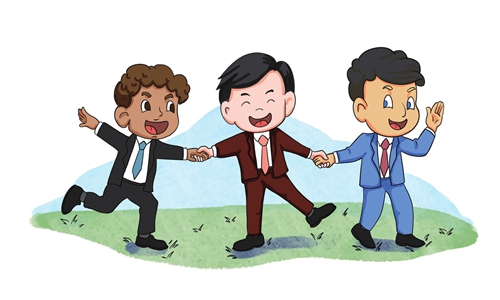
G20 Photo:VCG
G20 leaders will meet this weekend in Rome's historic surroundings of EUR, a neighborhood created by Benito Mussolini to glorify his fascist regime and its links with ancient Rome.
The summit of the world's major economies will be held away from Rome city center, home to the Colosseum and the Pantheon, where the tourists, historic buildings and tiny streets pose a nightmare for security and access.
Instead, leaders will gather in a futuristic convention center known as the "Nuvola [cloud]," featuring a suspended structure inside a glass and steel box, in a southern suburb with more easily policed boulevards and its own unique charm.
EUR, which stands for Esposizione Universale Romana, or Rome World Expo, was conceived in the 1930s as a showcase for modernist architecture and as the home of the 1942 edition of the world expo.
The event, which would have coincided with the 20th anniversary of the fascist regime, never took place due to World War II.
The conflict also forced Mussolini's architects to leave EUR half-finished.
Located in the southern outskirts of Rome, between the historic center and the seaside suburb of Ostia, EUR is characterized by monumental buildings in white marble and travertine stone, typical of the fascist era.
Its best-known landmark is the so-called Square Colosseum, a white cube with arches originally meant to host the Palace of Italian Civilization, and now the headquarters of Italian fashion house Fendi.
On its four sides, the building bears an inscription taken from a 1935 Mussolini speech celebrating Italians as "a people of poets, artists, heroes, saints, thinkers, scientists, navigators and transmigrants."
Fascist propaganda is also on display at the Palazzo Uffici, which boasts at its entrance a giant bas-relief of the history of Rome that starts with Romulus and Remus and ends with Mussolini on horseback, his right arm raised in a fascist salute.
Today, EUR is a residential and business area hosting the headquarters of the ENI energy group and of several other public and private institutions, plus museums, concert halls and an artificial lake popular with locals in the summer.
But in the immediate post-war years, it resembled a ghost town, with abandoned buildings occupied by refugees.


